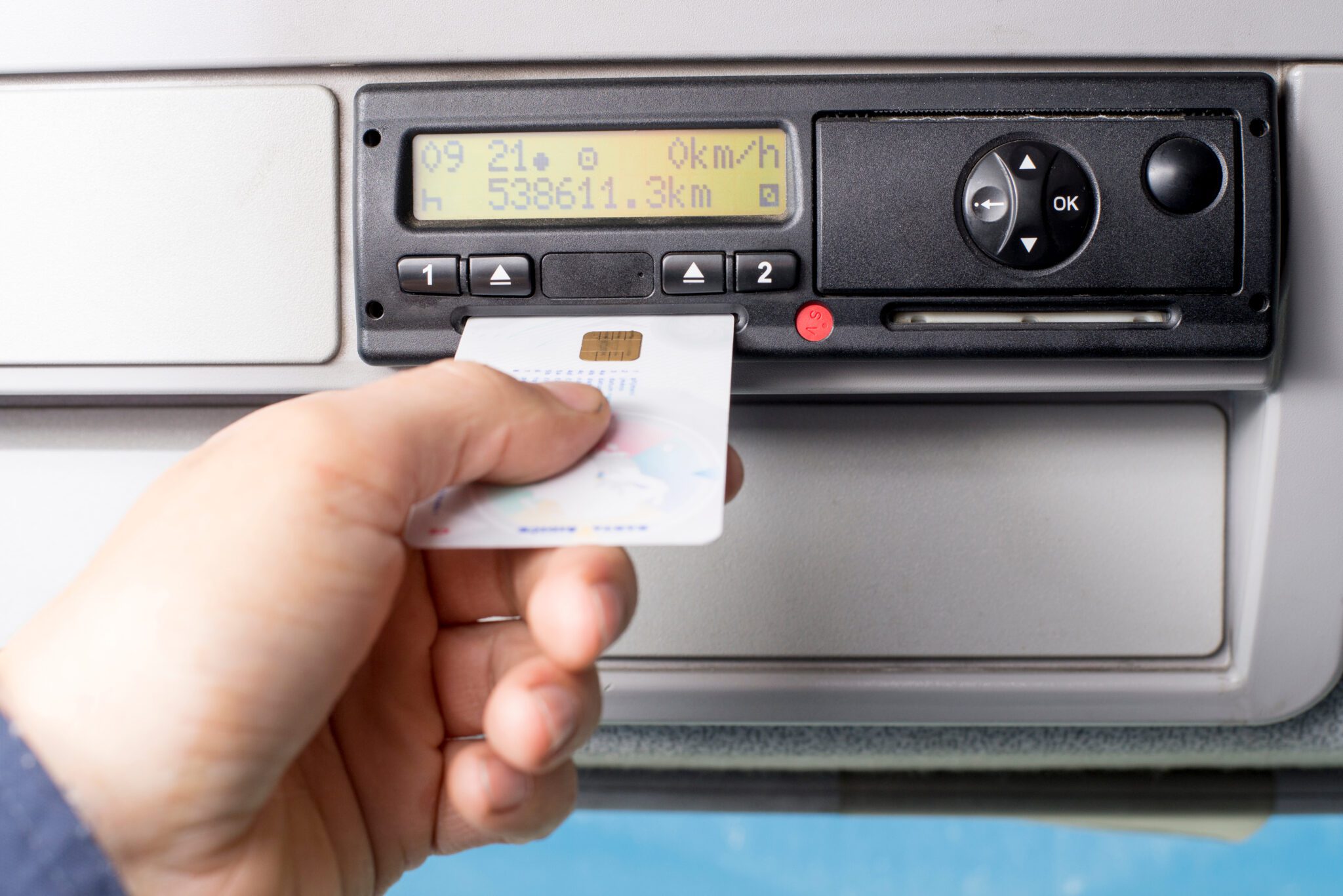In fleet vehicles, smart tachograph actively captures driver-related data, including driving speed, mileage, and break and rest periods. These digital devices play a crucial role in ensuring businesses comply with legislation on drivers’ hours.
How does smart tachograph magic work?
Since 2005, tachographs have been standard equipment for truck and bus fleets, but the pivotal shift occurred in 2019 when all new vehicles were required to incorporate the intelligent iteration.
Of course, exceptions apply; emergency service vehicles and those traveling at speeds below 25 mph are exempt. These intelligent tachographs don’t just enforce regulations; they also actively advocate for road safety.
Adhering to drivers’ hours regulations goes beyond legal compliance—it represents a concerted effort to ensure our drivers are sufficiently rested, thus bolstering safety on the roads.
The digital tachographs spring into action as soon as the wheels start turning, meticulously recording data on speed, mileage, and the driver’s designated rest periods.
Time-traveling aspect of smart tachograph
Consistently recording data in Universal Time (UTC), smart tachographs erase any confusion during British Summer Time changes.
While drivers can choose to set the display time to local, the device remains unwaveringly loyal to UTC. Concerning driving hours, a smart tachograph sets a maximum limit of 9 hours behind the wheel in a single day (extendable to 10 hours twice a week), 56 hours in a week, and a substantial 90 hours over two consecutive weeks.
Strict adherence to these regulations is imperative for both operators and drivers. Violations may lead to fines and other undesirable consequences.

Tachograph smartcard types
The system comprises four distinct card types:
Company cards, which empower fleet managers to monitor compliance; Workshop cards, reserved for authorized technicians conducting tachograph installations and repairs.
Control cards, designed for legislative authorities conducting checks during roadside stops; and finally.
Driver cards are responsible for storing comprehensive details about a driver’s work and rest hours.
Workshop cards, maintain an annual validity, while driver cards retain effectiveness for a substantial period of five years.
How has the smart tachograph rule changed?
The evolution of tachograph regulations harks back to the 1950s with the introduction of analog devices. Skip ahead to 2005, when EU fleet vehicles received the mandate to incorporate tachographs.
However, the pivotal moment arrived in 2019, demanding all new EU fleet vehicles to equip smart tachographs, marking the initiation of the digital era.
The narrative advances with the rollout of Mobility Package 1 in August 2023, heightening regulations concerning drivers’ hours and industry competition.
By 2025, every transportation fleet is expected to embrace the smart tachograph version 2, contributing to the safety, integrity, and sophistication of our road systems.